The Candeo Hotels Kyoto Karasuma Rokkaku won GOLD in the MUSE DESIGN AWARDS 2022.
Francesco Ristori and Anna Nishigori are young designers who are steadily developing their skills and practice, including interior design for the hotel.
In this interview, we focused on the design work conducted at Candeo Hotels Kyoto Karasuma Rokkaku, and interviewed the two about how they became interested in design and their personal lives.
*Francesco Ristori, hereafter referred to as “Francesco”; Anna Nishigori, hereafter referred to as “Nishigori.”
◆First of all, please tell us about your backgrounds.
Francesco: “I studied architecture at the University of Florence. After graduation, I worked in Italy designing residential and retail buildings and restoring many historical buildings. In the process, I became interested in designing new buildings and decided to move to Japan, where there are many historical buildings, just as in Italy.”
Nishigori: “I originally majored in civil engineering. However, I became interested in the renovation of historical buildings after encountering Tate Modern in the UK. So, I decided to study interior design in England.”
◆Please tell us about the properties you have worked on since joining GARDE.
Francesco:“Since coming to Japan in 2014, he has participated in a wide range of office, hospitality, residential, retail, and department store projects in Japan and Asia, including, MetLife Tokyo Garden Terrace Olinas Tower, Candeo Hotels Kyoto Karasuma Rokkaku, Kosugi 3rd Avenue, HOTEL ARU KYOTO Sanjo-Kiyamachi, and many other projects in Japan and Asia at large, in a wide range of genres including office, hospitality, residential, commercial, and department stores. My current focus is office design.”
Nishigori: “Since joining the company, I have worked on interior design for various genres such as hotels, retail, and food halls. For example, I have been in charge of designing various properties with a focus on hospitality design, such as Cerulean Tower Tokyu Hotel, Candeo Hotels Kyoto Karasuma Rokkaku, and US HOTEL.”
◆What did you keep in mind when designing Candeo Hotels Kyoto Karasuma Rokkaku?
Francesco: “I felt that Kyoto has a strong identity and connection with its neighborhood associations in a positive sense;where communities are formed,and culture is nurtured. I thought this was very valuable and would continue to be so, so I tried to ensure that the hotel design would gently blend in with the town while maintaining harmony with the surrounding community.
Nishigori: “When we first toured the house, the machiya was very dark, but due to the nature of the lounge, we tried to create a bright space that everyone would want to enter as a place welcoming to guests. On the other hand, there were many regulations that made it difficult to design the space, such as not allowing holes in the beams due to the fact that is a historical building. In this situation, we worked while considering how to integrate `character` of Candeo Hotel, and how to express it in the design.
◆What are some of the things that have inspired you?
Francesco:“The key to the design of the Candeo Hotel is its femininity. Therefore, we picked up the best materials that convey a soft and elegant image, starting with feminine colors, and worked to incorporate them into the design without being obnoxious.”
Nishigori: “Since the concept of the `character` of Candeo Hotel was `glitz and glamour`, we were inspired by jewelry as a symbol of that concept.”
◆What are the key points of the design and what do you definitely want people to see here?
Francesco:“The courtyard is the focal point of Candeo Hotels Kyoto Karasuma Rokkaku, where the fragrance of the historic machiya house and the gentle, modern design of the new building merge. I hope you will see and feel it.
Nishigori: “The structure of the room currently used as a BAR is interesting and definitely something to behold”
◆Through the MUSE DESIGN AWARDS and other design awards, our designs have been highly evaluated. What are the points that you think have been highly evaluated?
Francesco: “I believe that the gentle blend of the new structure with the historic building is a key point in its evaluation.
Nishigori: “I think the key to the design is in the fusion of old and new, with a connection between the historical value of the townhouse itself and the new building that takes advantage of this value.”
◆What have you learned through the design of Candeo Hotels Kyoto Karasuma Rokkaku?
Francesco: It was very exciting to be involved in a project that blends historical buildings that tend to be untouched depending on their intended use with new architecture, transforming them into completely new structures, and I believe it was a wonderful experience for my future design work.
Nishigori:There were more regulations than for buildings I had experienced before, so I learned a lot thinking about how to give shape to the design I envisioned. Specifically, I did research on buildings in advance and designed them while thinking about where to show them off.”
◆How do you want to use this in your future design work?
Francesco: “In future projects, as in this one, I would like to design with consideration for the surrounding history and community. The reason for this is that regardless of whether it is a new property, renovation, or refurbishment, we believe it is the job of the architect/designer to pass on to the next generation the history and culture that has already been nurtured in that location, and the connection to the surrounding area that has always existed.”
Nishigori: “When designing, you must think about the actual construction method and how it will fit together beautifully.”
◆What design or project (either domestic or international) would you like to be involved in or work on in the future?
Francesco:“Based on this experience, we would like to reincarnate and renovate historical buildings as office environments, making the best use of modern technology and methods.”
Nishigori: “If given the opportunity, I would like to design a renovation of a historical building again.”
◇From here on out, we’re going to talk about the designer`s private lives…
◆I think your schedule becomes quite hard when you are close to the deadline. Is there anything you do to keep yourself going even in such a situation?
Francesco:“I am not doing anything special. The closer the deadline gets, the more efficient my production naturally becomes (laughs).”
Nishigori:“I try to get a good night’s sleep.”
◆How do you spend your days off?
Francesco: “I leave the city with my family and get in touch with nature.”
Nishigori:“Schooling, working on assignments, playing with my cats, and going out for a nice dinner with my husband!”
◆I think that a balance between design and mind/body is very necessary. What do you recommend to keep this balance?
Francesco:“For me, the moment I leave the office, I try to forget about work and switch to personal mode!”
Nishigori:“It’s all about eating good food and getting a good night’s sleep!”
◆What do you think is the one thing you must not lose when you are involved in the design business?
Francesco:“Motivation.”
Nishigori: “The spirit to never give up”
◆What do you want to convey through architectural design that will last for 100 or 200 years?
Francesco:“I believe that the quality of design can be found in the importance of history. In other words, architectural design is connected by connecting history. That is what I would like to convey
Nishigori: ”Quite simply, I think good design is appreciated regardless of time.
◆What advice would you give to those who want to get involved in design and make a living from it?
Francesco:“Design is a multi-sensory experience, not just a desk study. Always be curious about what happens in before your eyes, and be curious about a wide range of things, not just design!”
Nishigori:“I think it’s important to actually experience it for yourself!”
◆What appeals to you?
Francesco: “I think this is where I have an international mindset and like to take in even more different perspectives, ways of thinking, and ideas.”
Nishigori: It’s an INFP-T type of place!
The two artists strive to improve their senses and skills while maintaining a good daily life-work balance and at the same time feeling the importance of design. We look forward to seeing their designs enriching the eyes and hearts of many people around the world in the future!
◆Candeo Hotels Kyoto Karasuma Rokkaku
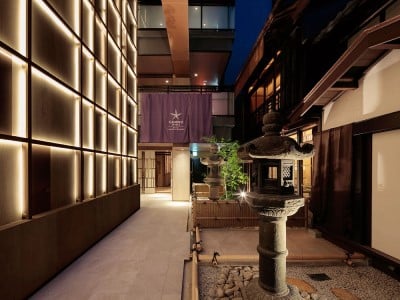
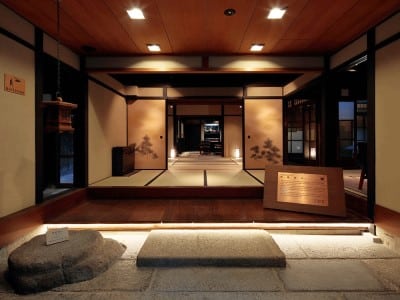
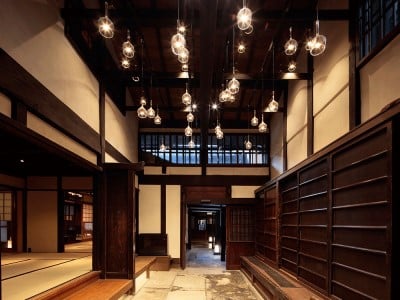
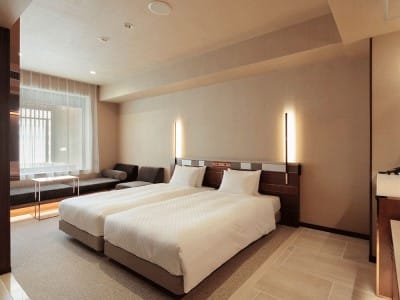
■Designer Profile
Francesco Ristori
International Design Division, Office Department, Architect, Designer
After achieving a master’s degree in architecture at the University of Florence, he specialized in Italy in housing and retail projects, as well as heritage buildings restoration. Since 2014 he has been involved as designer at GARDE, operating in Japan and Korea, China, and south-east Asia, involved in several project scales, such as corporate offices, hospitality, residential, commercial facilities, and department stores.
Anna Nishigori
Design Division, Large-scale Facility Design Department, Designer
After studying interior architecture in the UK and obtaining MA, she joined GARDE in 2017. She was involved in the concept planning, schematic design and construction document of Kyoto Candeo Hotel and Osaka’s new hotel. Utilizing the interior architecture technology she learned in the UK, she has been involved in various projects both in Japan and overseas with the focus on hospitality design.

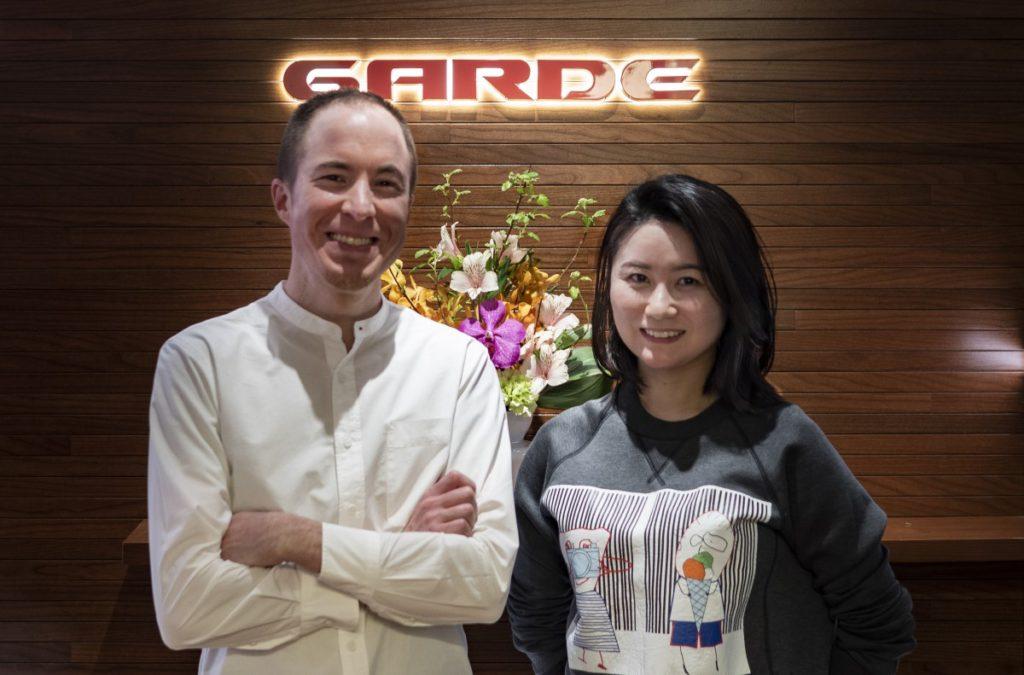
Pingback: "Candeo Hotels Kyoto Karasuma Rokkaku" and "Prince Smart Inn Kyoto Sanjo" were selected as Winners of the "iF DESIGN AWARD 2023"! - Garde Design Magazine
Pingback: GARDE Project Awarded at Worldwide Design Awards - Garde Design Magazine